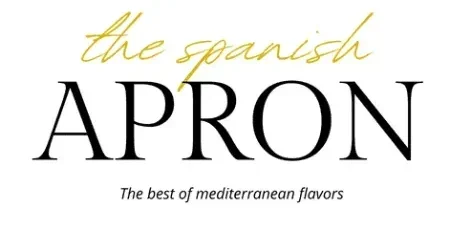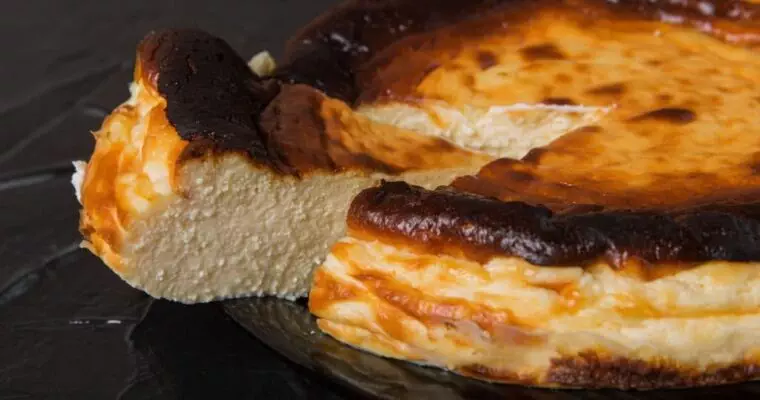The rich culinary traditions of Andalusia, a region in southern Spain, are filled with recipes that have been passed down through generations, preserving the flavors and memories of the past. One such recipe is Poleá, a traditional Andalusian porridge that has warmed the hearts and stomachs of many. Simple yet flavorful, this dish is a testament to the beauty of uncomplicated cooking, where basic ingredients come together to create something truly special.
Table of Contents
Origins and Cultural Significance of this Porridge
Poleá is more than just a dish; it’s a piece of Andalusian heritage. Historically, this porridge was a staple in many households, especially during the colder months when hearty, warming foods were needed. It was often made with whatever ingredients were on hand, making it a versatile and accessible recipe for families across the region. The dish reflects the resourcefulness of Andalusian cooks, who could turn simple staples into a comforting meal.
For me, Poleá is a recipe that connects me deeply with my roots. My mother used to prepare it on cold winter afternoons, filling the kitchen with the soothing aroma of anise and the sweet scent of fried bread. Watching her cook was like witnessing a piece of history come to life, a tradition that had been passed down to her and would one day be passed down to me.
Classic Ingredients of the Andalusian Porridge
The beauty of Poleá lies in its simplicity. The traditional ingredients include:
- Flour: Typically wheat flour, forms the base of the porridge.
- Water or Milk: Used to create the porridge consistency, with milk adding a richer flavor.
- Sugar: Adds sweetness to the dish, which can be adjusted to taste.
- Anise (Matalauva): This spice gives Poleá its distinctive flavor, often used in Andalusian desserts.
- Bread: Fried in olive oil, it adds a delightful crunch to the smooth porridge.
- Olive Oil: Used for frying the bread and sometimes added to the porridge for richness.
Optional ingredients might include a sprinkle of cinnamon or a drizzle of honey, both of which enhance the dish’s warmth and sweetness.
Step-by-Step: How to Prepare the Traditional Recipe
Making Poleá is a straightforward process, but it requires some attention to achieve the perfect texture and flavor. Here’s how to make it:
Ingredients:
- 1 cup wheat flour
- 2 cups water or milk (or a mix of both)
- 1/2 cup sugar (adjust to taste)
- 1 tablespoon anise seeds (matalahuga)
- 4 slices of bread, cut into small cubes
- 1/4 cup olive oil
- Cinnamon, for topping
Instructions:
- Prepare the Fried Bread:
- Heat the olive oil in a pan over medium heat.
- Add the bread cubes and fry until golden brown and crispy. Remove and set aside.
- Toast the Flour:
- In a large pan, add a small amount of the olive oil used for frying.
- Add the flour and toast it gently over low heat, stirring constantly to prevent burning. The flour should take on a light golden color and a nutty aroma.
- Add the Liquid:
- Gradually add the water or milk to the toasted flour, stirring constantly to avoid lumps.
- Continue stirring until the mixture thickens into a smooth porridge.
- Flavor the Porridge:
- Add the sugar and anise seeds to the porridge, stirring well to combine.
- Cook the mixture on low heat for a few more minutes, allowing the flavors to meld.
- Serve:
- Spoon the Poleá into bowls and top with the fried bread cubes.
- Optionally, sprinkle with cinnamon or drizzle with honey for added sweetness.
Personal Tips:
- My mother always used a mix of water and milk, which I believe gives the Poleá a perfectly balanced texture—not too rich, but still creamy.
- For a deeper flavor, try lightly toasting the anise seeds before adding them to the porridge.
Variations of the Porridge
While the traditional recipe is cherished, there are many ways to adapt Poleá to suit modern tastes or dietary needs:
- Vegan Poleá: Substitute the milk with almond or oat milk and use a plant-based oil for frying.
- Gluten-Free: Replace wheat flour with a gluten-free alternative like rice flour or cornstarch. Adjust the liquid accordingly to achieve the desired consistency.
- Nutty Poleá: Add a handful of ground almonds or hazelnuts to the porridge for a richer texture and flavor.
Each variation brings a new twist to this timeless dish, allowing you to experiment while still honoring the original recipe.
The Emotional Value of Poleá: A Link to Family Heritage
Poleá is more than just a meal; it connects to the past. Every time I prepare it, I’m reminded of the cold mornings spent in my mother’s kitchen, the stove’s warmth, and the love that went into every dish she made. For many Andalusians, Poleá represents not just a recipe, but a tradition—a way to keep the memory of loved ones alive through food.
By continuing to make and share Poleá, we’re preserving a piece of culinary history and passing on the values and memories that come with it. It’s a simple act of cooking that carries a deep sense of belonging and continuity.
Related Recipes
If you enjoyed Poleá, you might also like these traditional Andalusian dishes:
- Migas: A hearty dish made from fried bread crumbs, often served with chorizo or bacon.
- Gachas: Similar to Poleá, but made with a different type of flour and often served with honey.
- Pestiños: A sweet pastry traditionally made during Easter, flavored with anise and honey.
- Torrijas: Spanish-style French toast, soaked in milk or wine and fried to golden perfection.
These recipes, like Poleá, are rooted in Andalusian culture and are perfect for those looking to explore more of the region’s culinary heritage.
FAQ: Frequently Asked Questions about Poleá
Q: Can I make Poleá ahead of time?
A: Yes, you can prepare the porridge ahead of time and reheat it gently over low heat. However, it’s best to add the fried bread cubes just before serving to keep them crispy.
Q: What is the difference between Poleá and Gachas?
A: While both are traditional Spanish porridges, Poleá is typically made with wheat flour and has a slightly thicker consistency. Gachas can be made with different types of flour and are often served with honey or sugar.
Q: Can I use different spices in Poleá?
A: Absolutely! While anise is traditional, you can experiment with nutmeg, or even vanilla for a different flavor profile.
Q: Is Poleá a breakfast dish or dessert?
A: Traditionally, Poleá can be enjoyed as either. It’s often served as a warming breakfast, but its sweetness also makes it a satisfying dessert.
Conclusion: Keeping Culinary Traditions Alive
Poleá is more than just a recipe; it’s a piece of Andalusian heritage that continues to bring warmth and comfort to those who prepare and enjoy it. By making and sharing this dish, we not only nourish our bodies but also keep the traditions of our ancestors alive. Whether you’re revisiting a childhood favorite or discovering Poleá for the first time, this simple porridge is a delicious way to connect with the rich culinary history of Andalusia.
So, gather your ingredients, take your time, and enjoy the process of making Poleá. Each spoonful is a taste of history, a reminder of the power of food to bring people together across generations.

Authentic Poleá Recipe: 5-Step Guide to Creamy Comfort Food (Andalusian Porridge)
Ingredients
- 1 cup Wheat flour
- 2 cups Water or milk (or a mix of both)
- ½ cup Sugar (adjust to taste)
- 1 tbsp Anise seeds (matalahuga)
- 4 Slices of bread, cut into small cubes
- ¼ cup Olive oil
- Cinnamon, for topping
Instructions
- Prepare the Fried Bread:Heat the olive oil in a pan over medium heat.Add the bread cubes and fry until golden brown and crispy. Remove and set aside.
- Toast the Flour:In a large pan, add a small amount of the olive oil used for frying.Add the flour and toast it gently over low heat, stirring constantly to prevent burning. The flour should take on a light golden color and a nutty aroma.
- Add the Liquid:Gradually add the water or milk to the toasted flour, stirring constantly to avoid lumps.Continue stirring until the mixture thickens into a smooth porridge.
- Flavor the Porridge:Add the sugar and anise seeds to the porridge, stirring well to combine.Cook the mixture on low heat for a few more minutes, allowing the flavors to meld.
- Serve:Spoon the Poleá into bowls and top with the fried bread cubes.Optionally, sprinkle with cinnamon.








